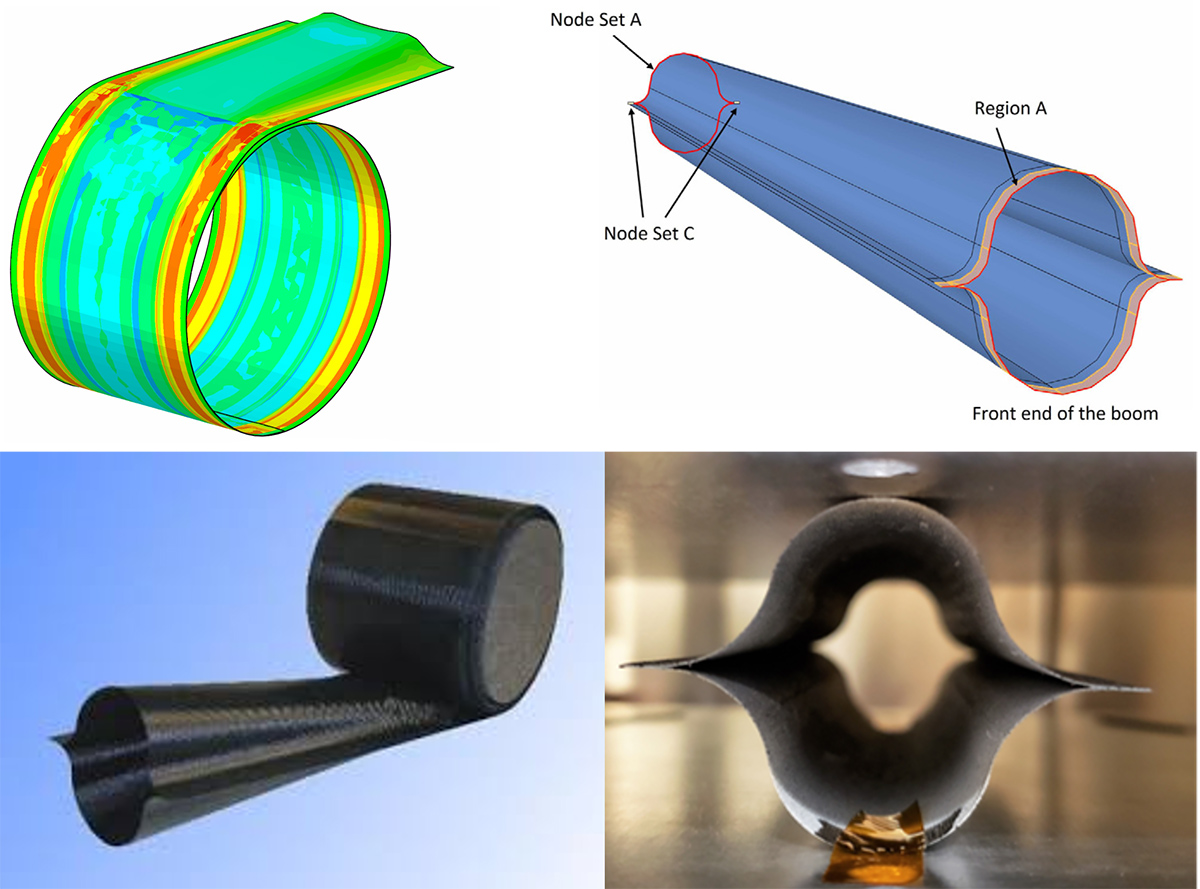Viscoelasticity
To ensure aerospace structures maintain their structural integrity and shape precision over long periods of operation, we construct time-dependent constitutive models for polymers and composites to accurately simulate response of large lightweight structures. Our research is conducted in close collaboration with NASA Langley Research Center, Goddard Space Flight Center, and Jet Propulsion Laboratory.
Shape Recovery of Composite Coilable Booms for Solar Sails

Coilable booms made of thin-ply composites provide mass and volume efficiency for deploying large structures in space. The recovered shape of the booms after being stowed in the coiled configuration is critical to the deployed stiffness and shape precision of the spacecraft, but is heavily influenced by the viscoelasticity of the polymer composites. A numerical study of coiling, stowing, uncoiling and shape recovery of a viscoelastic thin-ply composite coilable boom is presented in this paper. The formulation of two micromechanics-based viscoelastic shell models and their numerical implementation in structural simulations are presented. The shape recovery of a composite boom coiled for two years, replicating the typical timeline for deployable structures used in solar sail missions, has been simulated. The demonstrated modeling and simulation capability is useful for designing deployable spacecraft structures.